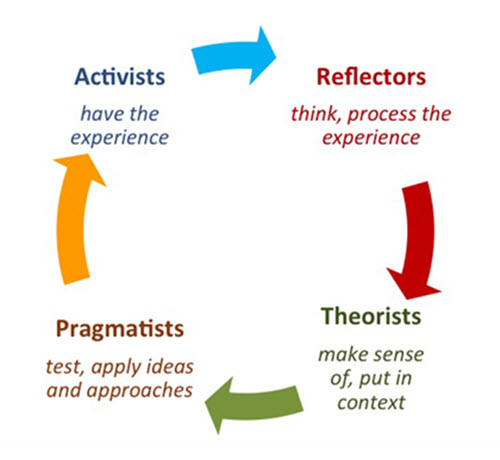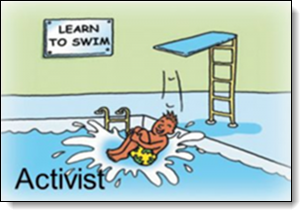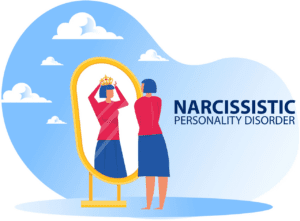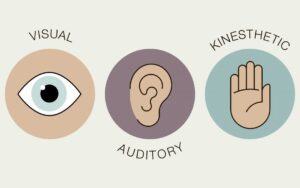
What are the Honey and Mumford 4 Learning Styles?
Most people never consciously consider how they learn, but to be an effective learner, you need to know your Preferred Learning Styles and find ways to learn using those methods.
To help people understand which styles work best for them individually, Peter Honey and Alan Mumford developed a learning model adapted from Kolb’s experiential learning model.
Honey and Mumford renamed the learning cycle stages from the Kolb model to align with an individual’s having, reviewing, concluding, and planning experiences.
- Activists have the experience.
- Reflectors review the experience.
- Theorists conclude from experience.
- Pragmatists plan the next steps from the experience.
The Honey and Mumford Four Learning Styles are formed around two axes. The horizontal axis is called the Processing Continuum and refers to how we approach a task. For example, do we prefer to learn by watching or doing?
The vertical axis is called the Perception Continuum and refers to our emotional response to the task.
Another words, how we think and feel about it?
The Honey and Mumford Four Learning Styles are assumed to be acquired preferences that are adaptable, either at will or based on the circumstances rather than as fixed personality characteristics.
Honey and Mumford Learning Styles Questionnaire (LSQ)
Honey and Mumford developed the Learning Styles Questionnaire (LSQ) in 1982 as a Self-Development tool.
It differs from Kolb’s Learning Style Inventory by asking people to complete a checklist of work-related behaviors without directly asking how they learn.
The LQS has been used extensively for over 35 years.
Knowing your Preferred Learning Styles will help you become a more productive learner.
Activist Learning Style

Activists learn best from performing activities where they encounter new experiences, problems, or opportunities. They love to ‘have a go’ at things and enjoy the stimulus of challenge.
Their philosophy is: “I’ll try anything once.”
Being thrown in at the deep end with a difficult task will be viewed as a challenge, not a daunting or overwhelming hurdle.
Activists live in the here and now and often thrive in short-term crises. They like change, fast pace, and various diverse activities to tackle, but they tend to act first and consider the consequences afterward.
They are open-minded, not skeptical, which makes them enthusiastic about anything new. Activists want practical tasks and very little theory, but they like to tackle problems by brainstorming.
They are gregarious people who constantly involve themselves with others, but in doing so, they seek to center all activities on themselves.
Activists thrive on new experiences and challenges but are bored with implementation and longer-term consolidation. As soon as the excitement from one activity has died down, they are busy looking for the next challenge.
Activist Learning Style Strengths
- Flexible and open-minded.
- They are happy to be exposed to new situations.
- Optimistic about anything new and therefore unlikely to resist change.
Activist Learning Style Weaknesses
- Tendency to take immediate action without thinking.
- Often, they take unnecessary risks.
- Tendency to do too much themselves and hog the limelight.
- Rush into action without sufficient preparation.
- Activists get bored with implementation/consolidation.
Activists learn best from activities where
- There are new experiences/problems/opportunities to learn.
- They can engross themselves in short “here and now” activities such as business games, competitive teamwork tasks, and role-playing exercises.
- There is excitement/drama/crisis, and things chop and change with various diverse activities.
- They have much of the limelight/high visibility, i.e., they can “chair” meetings, lead discussions, and give presentations.
- They can generate ideas without policy, structure, or feasibility constraints.
- They are thrown in at the deep end with a task they think is difficult, i.e., when set a challenge with inadequate resources and adverse conditions.
- They are involved with other people, i.e., bouncing ideas off them and solving problems as part of a team.
- It is appropriate to “have a go.”
Activists learn least from and may react against activities where
- Learning involves a passive role, i.e., listening to lectures, monologues, explanations, and statements of how things should be done, reading, and watching.
- They are asked to stand back and not be involved.
- They must assimilate, analyze, and interpret lots of “messy” data.
- They are required to engage in solo work, i.e., reading, writing, and thinking independently.
- They are asked to assess beforehand what they will learn and appraise what they have learned.
- They are offered statements they see as “theoretical,” i.e., an explanation of the cause or background.
- They are asked to repeat essentially the same activity over and over again, i.e., when practicing.
- They have precise instructions to follow with little room for maneuvering.
- They are asked to do a thorough job, i.e., attend to detail, tie loose ends, dot the i’s, and cross t’s.
Activist Personality Type cross-reference
- Keirsey Type – Rationals
- Temperament Type – Choleric
- Animal Type – Lion
- DISC Type – Dominant
- Socio-Communicative Type – Driver
- True Colors – Green
- Color Code – Red
- Personality Compass – North
- Occupational Type – Enterprising
MBTI Personality Types (xNTx) – Intuition and Thinking
Enneagram Types
- Type 1 – The Reformer (ENTJ, INTJ)
- Type 3 – The Achiever (ENTP)
- Type 5 – The Investigator (INTJ, INTP)
- Type 7 – The Enthusiast (ENTP)
- Type 8 – The Challenger (ENTJ)
Reflector Learning Style

Reflectors prefer to have more of a ‘back seat’ role. They like to stand back on the edge of the activity and observe what is going on from different perspectives.
Reflectors are usually good at data collection and thoroughly analyze their own time before coming to conclusions. They like to consider the situation from all angles before acting, so they are usually cautious.
Their philosophy is: “to be cautious.”
Reflectors do not like to be pressured or bound by tight deadlines and want lots of breaks to go off and read and discuss. They enjoy observing others in action, listening, and getting the gist of the discussion before making their points.
Reflectors adopt a low profile and have a slightly distant, tolerant, unruffled air. When they act, it is part of a comprehensive picture that includes the past and the present and others’ observations as well as their own.
Reflector Learning Style Strengths
- Careful.
- Thorough and methodical
- Thoughtful
- Good at listening to others and assimilating information.
- Rarely jump to conclusions.
Reflector Learning Style Weaknesses
- Tendency to hold back from direct participation.
- Slow to make up their minds and reach a decision.
- Tendency to be too cautious and not take enough risks.
- Not assertive – they aren’t particularly forthcoming and have no “small talk.”
Reflectors learn best from activities where
- They are allowed or encouraged to watch/think/chew over activities.
- They can stand back From events and listen/observe, i.e., observing a group at work, taking a back seat in a meeting, or watching a film or video.
- They are allowed to think before acting and to assimilate before commencing, i.e., have time to prepare and a chance to read a brief giving background data in advance.
- They can conduct thorough research, i.e., investigate, assemble information, and probe to get to the bottom.
- They can review what has happened and what they have learned.
- They are asked to produce carefully considered analyses and reports.
- They are helped to exchange views with other people without danger, i.e., by prior agreement, within a structured learning experience.
- They can decide independently without pressure and tight deadlines.
Reflectors learn least from and may react against activities where
- They are “forced” into the limelight, i.e., to act as leader/chairman and role-play in front of on-lookers.
- They are involved in situations that require action without planning.
- They are pitched into doing something without warning, i.e., to produce an instant reaction and an off-the-top-of-the-head idea.
- They are given insufficient data on which to base a conclusion.
- They are given cut-and-dried instructions on how things should be done.
- They are worried by time pressures or rushed from one activity to another.
- In the interests of expediency, they have to make shortcuts or do a simple job.
Reflector Personality Type cross-reference
- Keirsey Type – Artisans
- Temperament Type – Sanguine
- Animal Type – Golden Retriever
- DISC Type – Steadiness
- Socio-Communicative Type – Amiable
- True Colors – Orange
- Color Code – Yellow
- Personality Compass – South
- Occupational Type – Conventional
MBTI Personality Types (xSxP) – Sensing and Perceiving
Enneagram Types
- Type 2 – The Helper (ESFP, ISFP)
- Type 6 – The Loyalist (All Sensing)
- Type 7 – The Enthusiast (ESTP, ESFP)
- Type 9 – The Peacemaker (ISFP)
Theorist Learning Style

Theorists like Concepts, Models, Theory, and Systems, and the opportunity to explore Interrelationships and Associations.
Theorists tend to have analytical minds and like to be stretched intellectually.
Their philosophy is: “If it’s logical, it’s good.”
Theorists like analyzing, synthesizing, adapting, and integrating observations into complex, logically sound theories. Rather than anything subjective or ambiguous, Theorists tend to be detached and dedicated to rational objectivity.
Theorists tend to be perfectionists who won’t rest easy until things are tidy and fit into a rational scheme. They want handouts, something to take away and study, and frequently ask questions like…
“Does it make sense?”
“How does this fit with that?”
“What are the basic assumptions?”
Theorist Learning Style Strengths
- Logical “vertical” thinkers.
- Rational and objective.
- Good at asking probing questions.
- Disciplined approach.
Theorist Learning Style Weaknesses
- Restricted in lateral thinking.
- low tolerance for uncertainty, disorder, and ambiguity
- Intolerant of anything subjective or intuitive.
- Full of “shoulds, the oughts’ and musts.”
Theorists learn best from activities where
- What is being offered is part of a system, model, concept, theory
- They have time to methodically explore the associations and inter-relationships between ideas, events, and situations.
- They can question and probe the basic methodology, assumptions, or logic behind something, i.e., by taking part in a question and answer session by checking a paper for inconsistencies.
- They are intellectually stretched, i.e., by analyzing a complex situation, being tested in a tutorial session, and teaching high-caliber people who ask searching questions.
- They are in structured situations with a clear purpose.
- They can listen to or read about ideas and concepts that emphasize rationality or logic and are well argued/elegant/watertight.
- They can analyze and generalize the reasons for success or failure.
- They are offered exciting ideas and concepts even though they are not immediately relevant.
- They are required to understand and participate in complex situations.
Theorists learn least from and may react against activities where
- They are pitch-forked into doing something without a context or apparent purpose.
- They have to participate in situations emphasizing emotions and feelings.
- They are involved in unstructured activities where ambiguity and uncertainty are high, i.e., with open-ended problems, on sensitivity training.
- They are asked to act or decide without a basis in policy, principle, or concept.
- They face a hotchpotch of alternative/contradictory techniques/methods without exploring in-depth, i.e., as on a “once over lightly” course.
- They find the subject matter trite, shallow, or gimmicky.
- They feel out of tune with other participants, i.e., with many Activists or people of lower intellectual caliber.
Theorist Personality Type cross-reference
- Keirsey Type – Idealists
- Temperament Type – Phlegmatic
- Animal Type – Otter
- DISC Type – Influential
- Socio-Communicative Type – Expressive
- True Colors – Blue
- Color Code – Blue
- Personality Compass – West
- Occupational Type – Artistic
MBTI Personality Types (xNFx) – Intuition and Feeling
Enneagram Types
- Type 1 – The Reformer (ENFJ, INFJ)
- Type 4 – The Individualist (INFJ, INFP)
- Type 7 – The Enthusiast (ENFP)
- Type 9 – The Peacemaker (INFP)
Pragmatist Learning Style

The Pragmatist’s motto is “If it works, it’s good.”
They focus firmly on implementation and output and look for the earliest opportunity to implement what has been offered.
They are practical, down-to-earth individuals who enjoy problem-solving and making sensible decisions.
Pragmatists are keen on trying out ideas, theories, and techniques to see if they work in practice. They search for new concepts and take the first opportunity to experiment with applications.
Their philosophy is: “There is always a better way.”
Pragmatists respond to problems and opportunities “as a challenge.”
They like to get on with things, act quickly and confidently on attractive ideas, and tend to be impatient with ruminating and open-ended discussions.
Pragmatist Learning Style Strengths
- Keen to test things out in practice.
- Practical, down to earth, realistic.
- Businesslike – gets straight to the point.
- Technique oriented.
Pragmatist Learning Style Weaknesses
- Tendency to reject anything without an obvious application.
- Are not very interested in theories.
- Tendency to seize on the first practical solution to a problem.
- Impatient with waffles.
- On balance, they are task-oriented, not people-oriented.
Pragmatists learn best from activities where
- There is an apparent link between the subject matter and a problem or opportunity on the job.
- They are shown techniques for doing things with obvious practical advantages, i.e., saving time, making an excellent first impression, and dealing with awkward people.
- They can try and practice techniques with coaching/feedback from a credible expert, i.e., someone who is successful and can do the methods themselves.
- They are exposed to a model they can emulate, i.e., a respected boss, a demonstration from someone with a proven track record, lots of examples/anecdotes, and a film showing hits done.
- They are given techniques currently applicable to their job.
- They are given immediate opportunities to implement what they have learned.
- The learning activity has a high face validity, i.e., a good simulation, ‘of “real” problems.
- They can concentrate on practical issues, i.e., drawing up action plans with an apparent end product, suggesting shortcuts, and giving tips.
Pragmatists learn least from and may react against activities where
- The learning is not related to an immediate need they recognize/they cannot see a direct relevance/practical benefit.
- Organizers of the learning, or the event itself, seem distant from reality, i.e., “ivory-towered,” all theory and general principles, pure “chalk, and talk.”
- There is no practice or clear guidelines on how to do it.
- They feel people are going around in circles and not getting anywhere fast enough.
- There are political, managerial, or personal obstacles to implementation.
- There is no apparent reward from the learning activity, i.e., more sales, shorter meetings, higher bonuses, and promotions.
Pragmatist Personality Type cross-reference
- Keirsey Type – Guardian
- Temperament Type – Melancholy
- Animal Type – Beaver
- DISC Type – Compliant
- Socio-Communicative Type – Analytical
- True Colors – Gold
- Color Code – White
- Personality Compass – East
- Occupational Type – Realistic



